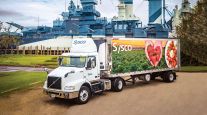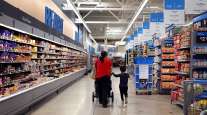Contributing Writer
Private Carriers Have Adjusted Their Operations for the Long Haul
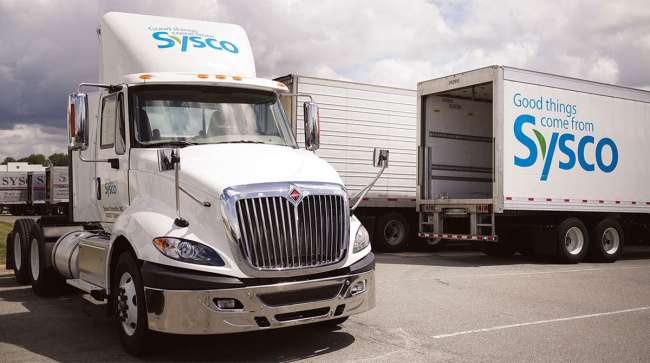
[Stay on top of transportation news: Get TTNews in your inbox.]
The COVID-19 pandemic is reshaping private carriers in ways that will last long after the novel coronavirus subsides.
A Transport Topics review of large private trucking fleets found that companies are rapidly adding digital tools and paperless methodology to their operations to reduce human contact and limit access to distribution centers. They are becoming more nimble, especially in implementing new technology and finding new revenue sources. Fleets also are more aware of employee health and the role it plays in productivity.
And of course, just about every company Transport Topics contacted is doing the basics to prevent the spread of the virus within their own workforce and to employees’ families and customers.

►Pandemic forces private carriers to shift gears
►Top 100 Private interactive map
►Private carriers adjust operations for the long haul
►Private fleets respond to higher e-commerce demand
Sector Rankings
Food Service | Grocery
Beverage
Petroleum/Chemical
Industrial Gases | Agriculture/Food Processing
Wholesale/Retail | Manufacturing Equipment Rental | Building Materials
Waste Management
Paper/Office Products
Construction
Health Care
Uniform Rental
Media & Entertainment
“We provide face masks, gloves, cleaning supplies and hand sanitizer to every driver before they dispatch,” said Jim VonAchen, director of transportation support at McLane Co., a major distributor of groceries and packaged goods based in Temple, Texas. “We disinfect the tractor, handheld scanners, driver bags and dollies after each trip.”
Several senior supply chain executives pointed to agility — in decision-making, business operations and revenue stream discovery — as a strength to maintain beyond the duration of COVID-19.
“When the pandemic first hit and everybody was rushing the grocery store, we pivoted very quickly,” said Marie Robinson, executive vice president and chief supply chain officer of food distribution giant Sysco.
The company signed agreements with other distributors to redeploy trucks used for food delivery to eating establishments — a business that had plunged — to retailers experiencing heavy shopping demand.
Others did the same.
“We took what excess capacity we had and applied it to areas that needed help, like the grocery chains, to keep our teammates and equipment utilized,” McLane’s VonAchen said.
Fleets also discovered they could significantly slash the time needed to develop and launch new business strategies and procedures.
“Some decisions that would typically take weeks to finalize were made in days and sometimes hours,” VonAchen said.

Robinson
Before the pandemic, Sysco had set a goal to better level its delivery volume across the days of the week to allocate labor more efficiently, Robinson said. Such an initiative typically would take the Houston-based distributor about 18 months to plan and implement.
“We did it in four weeks when the crisis hit,” she said.
This type of productivity advancement will remain in place even when the pandemic fades.
With 8,745 tractors and another 1,345 box trucks, Sysco ranks No. 2 on the Transport Topics Top 100 list of the largest private carriers in North America.
McLane has 3,886 tractors and ranks No. 8 on the TT100 list of private fleets.
Technology Investments
Whether it is transitioning employees to remote work, tracking worker health or refining loading and delivery windows to limit human contact, technology has played a vital role in seeing fleets through the pandemic. And it is creating efficiencies that will last beyond the crisis, industry executives said.
Southern Glazer’s Wine & Spirits, a large alcoholic beverage distributor, modified its text message system to prompt drivers and other workers to complete a health form two hours before their shift. It has become an important communications tool during the pandemic. The distributor now uses the text messaging system to reach employees with critical updates because it can reach them even if they’re working remotely, or if they are drivers or warehouse personnel who don’t sit at a desk.
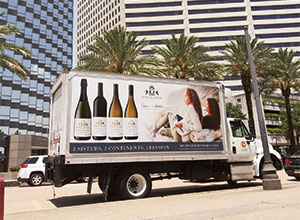
Southern Glazer’s has utilized a text message system to improve communications with its workforce. (Southern Glazer’s Wine & Spirits)
Fleets have access to an ever-increasing amount of data generated by electronic logging devices and telematics systems, which they can utilize to improve operations, McLane’s VonAchen said.
“We are able to tell our customers our projected delivery time from the first stop to the last, with added traffic and weather impacts. Our customers can then prepare for our arrival 12 hours out and make sure they have resources ready,” VonAchen said.
Armed with this information, McLane restructured its delivery network to meet demand and reduce cost when business slowed early in the pandemic.
“As you scale up from a small company, these tools become invaluable,” VonAchen said.
Southern Glazer’s also has invested in technical equipment. It has thermal scanners that check workers and visitors for fever as they reach the security station at the front of a company facility.
“We don’t see an end in sight to this any time soon. We are making the investment in technology,” said Ron Flanary, senior vice president of national operations for the Miami-based beverage distributor.
Southern Glazer’s operates a fleet of 721 tractors and another 2,189 straight trucks. It employs about 2,500 drivers and ranks No. 59 on the TT100 private carriers list.
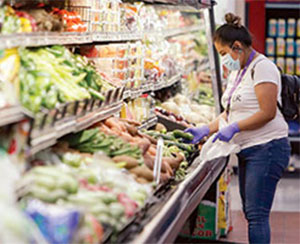
Grocery retailers have experienced heavy demand during the COVID-19 outbreak. (LM Otero/Associated Press)
Trucking equipment is one area where many private fleets wish they had invested more extensively prior to the pandemic, said Jim Griffin, chief operating officer at Fleet Advantage, a truck leasing and fleet asset management company.
“We have some clients that had put off fleet modification and felt that was a mistake. They should have been more prepared,” Griffin told Transport Topics.
Companies have slashed capital expenditures, leaving fleets with aging equipment that lacks the fuel efficiency and automated safety systems that reduce operating expenses, he said.
Griffin expects fleets will rapidly replace aging trucks once the economy rebounds, and they are convinced there will be sustained growth.
Focusing on Employee Health
Enhanced sanitation protocols are another change likely to last beyond the pandemic as companies adopt practices that limit the spread of diseases between workers.

Natural gas and propane join electric power as alternatives to diesel. Host Seth Clevenger talks with Chad Lindholm of Clean Energy and Stuart Weidie of Alliance Autogas. Hear a snippet, above, and get the full program by going to RoadSigns.TTNews.com.
Drivers at Southern Glazer’s now “stop and drop,” Flanary said.
Instead of capturing a signature, the driver notes the name of the person accepting the shipment and the time of the delivery, limiting personal contact.
Southern Glazer’s is “spending a substantial amount of money to sanitize the trucks and break rooms,” Flanary added. “We probably have 100 people nationwide who are just cleaning.”
Developing contactless interaction is a high priority for private fleets.
“Think about the drivers having to share a pen with a customer,” Sysco’s Robinson said.
Delivery validating technology was another initiative the food distributor planned to tackle and accelerated as the pandemic unfolded, she said. It is now transitioning from other delivery procedures that could potentially require personal contact.
But not every fleet can move to a contactless business model.
“We are paper-intensive. With hazardous material, hazardous manifests, tracking and chain of custody is critically important to the hazardous waste industry,” said Kevin Ridings, executive vice president of transportation and logistics at Clean Harbors.
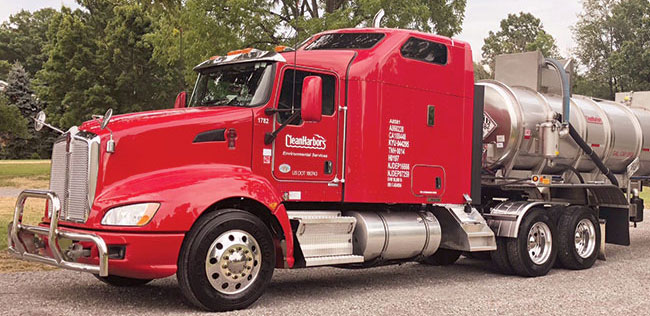
Private carriers such as hazardous waste hauler Clean Harbors are taking steps to protect their workers through sanitation and social distancing measures. (Clean Harbors)
The Norwell, Mass., handler of industrial and hazardous waste provides its drivers with their own pens to use while the federal government develops an electronic manifest system for the industry, he said. Drivers are setting down documents for their contact to counter-sign, and then retrieving the form to maintain social distance.
Providing protective gear such as masks and hand sanitizer to drivers and other workers is less challenging. Clean Harbor already supplies much of its workforce with personal protective equipment. The company’s Safety-Kleen division has conducted more than 5,000 COVID-19 contamination jobs for other businesses.
Clean Harbors operates 1,097 tractors and 4,531 box trucks and ranks No. 30 on the private TT100.
The focus on health and safety will continue beyond the short term, McLane’s VonAchen said.
“Our teammates need to be able to comfortably stay home if they are feeling sick, and they need to feel safe working in our facilities,” he said. “As to equipment, we will likely keep an inventory of masks, scanners and sanitizer as pandemic preparedness measures well after COVID-19 subsides."
Better hygiene in all sectors of a large company is a smart business move, Sysco’s Robinson said.
“If you adhere to all of the things we are talking about, absenteeism will go down and you will have fewer people getting sick at work,” she said.
Is Remote Work Here to Stay?
Even with enhanced worker health measures, there still will be plenty of opportunities for people to work from home. The companies discovered that a decentralized business model — where scheduling and other functions can be handled remotely — could supplement employees in offices.
“You never thought you could send people home for a long period and keep the national supply chain to grocery stores holding up very well,” Flanary said.
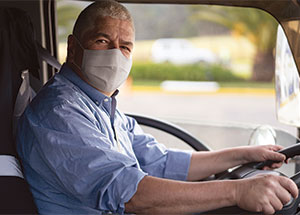
Many fleets have been issuing personal protective equipment such as face masks to their drivers. (andresr/Getty Images)
Clean Harbors took about eight days to shift almost entirely to remote work and dispatch, including ironing out bumps and glitches, Ridings said.
The company has a typical VPN, or virtual private network, that is accessed via laptops. Clean Harbors, however, has planners and dispatchers who work from office-based desktop workstations. They needed a way to access the system. All of its workers have company-issued Apple iPhones, and that provided a solution. Employees can now access essential planning and dispatch functions through proprietary apps developed for the phones, Ridings said.
But Robinson said having an entire team working remotely can only go so far. She expects a bounceback when it is safe.
At some point, management and other team members will have to meet to complete tasks such as updating engineering standards or conducting employee evaluations or promotions, she said.
“This is the first time in my 32-year career when I’ve actually asked my associates to put themselves in a situation that I have not put myself in,” Robinson said. “I want to get back into the truck.”
Want more news? Listen to today's daily briefing:
Subscribe: Apple Podcasts | Spotify | Amazon Alexa | Google Assistant | More


